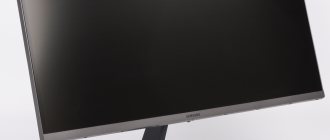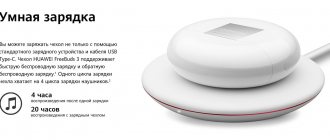GTX 1050 Ti Specifications
GPU Specifications
| CUDA Cores | 768 |
| Base clock speed | 1290 MHz |
| Boost clock speed | 1392 MHz |
| GPU architecture | Pascal |
Memory Specifications
| Memory performance | 7 Gbps |
| Standard memory configuration | 4 GB GDDR5 |
| Memory bus bandwidth | 128-bit |
| Memory Bandwidth | 112 GB/sec |
Technology support:
| Multi-projection | Yes |
| VR support | No |
| Ansel | Yes |
| Yes | No |
| G-Sync | Yes |
| GameStream | Yes |
| GPU Boost | 3.0 |
| DirectX | 12 API with feature level 12_1 |
| Vulkan API | Yes |
| OpenGL | 4.5 |
| Tire | PCIe 3.0 |
| OS support | Windows 7-10, Linux, FreeBSDx86 |
Display support:
| Maximum digital resolution | 7680×[email protected] |
| Standard connectors |
|
| Multiple monitor support | Yes |
| HDCP | 2.2 |
Power and temperature:
| Maximum GPU temperature | 97°C |
| Power consumption | 75 W |
| Recommended Dietary Requirements | 300 W |
| Additional power connector | No |
Manufacturers
There is no reference model of this video adapter from nVidia itself; the 1050 Ti is produced by a dozen other vendors, namely:
- ASUS
- EVGA
- Colorful
- Gainward
- Gigabyte
- Inno 3D
- KFA2
- MSI
- Palit
- PNY
- Zotac
Let's take a closer look at some of them.
MSI GeForce GTX 1050 Ti OC
The MSI video card is equipped with one fan. It is made of black plastic with white inserts. A power supply of at least 300 watts will be sufficient to operate the video card. It also produces virtually no heat, which is good news.
If we talk about the characteristics, then it has 4GB of video memory with a frequency of 7008 MHz and a 128-bit bus.
The GPU operates at 1341 MHz. Can be overclocked to 1455 MHz. But it heats up decently, and therefore if the cooling is poor, it’s better not to mess around with overclocking.
GIGABYTE GeForce GTX 1050 Ti
This brand always provides video adapters at low prices and high performance, but not this time. There are no questions about the design. There are two fans. But the parameters this time are not encouraging. The GP107-300 graphics chip is far from the best. The GPU operates at 1379 MHz. The video memory capacity is only 2 gigabytes, and the frequency is 7008 MHz.
There are two overclocking modes: gaming (up to 1493 MHz) and OC (up to 1518 MHz). These figures are higher than MSI's, but in games it is only slightly more powerful than its competitors.
Palit GeForce GTX 1050 Ti
It is compact and easily installed in small enclosures. It has one cooler. The body is made of black plastic. It contains the company logo. The GPU operates at 1290 MHz. Video memory has a capacity of 4 gigabytes with a frequency of up to 7000 MHz.
It consumes little energy, therefore it also emits little heat. One cooler is enough for cooling. You can overclock to 1392 MHz, the increase will be sufficient for online games.
Colorful iGame 1050 Ti
ASUS ROG Strix
The only version of the 1050 Ti listed above that has a 6-pin connector for additional power. This means that the card from Asus Strix is suitable for overclocking.
Cooling is provided by two fans. The back panel is covered by a metal backplate stylized as the ROG series. There is no backlight. The package is distinguished by the presence of two stickers for the body. The most interesting thing about this video card is its overclocking capabilities.
Final review
The Gigabyte GTX 1050 Ti video card performs well in modern games and is perfect for building a budget gaming computer. Allows you to play most games on high or medium graphics settings, which is quite good. To purchase, I recommend choosing the mid-price model GV-N105TOC-4GD with two fans and one cooling heat pipe. The GTX 1050 Ti chip does not require more powerful cooling. Also, you should not save money and buy a version with one fan, as you will lose a cool feature - turning off the fans when idle.
The average market price of a new video card is about $200. In my opinion, this is an overpriced and to save money you can make a purchase on the secondary market for $130. True, given the past mining boom, there is a big risk of running into a copy from a farm. Therefore, choose only trusted sellers.
Overclocking and testing GTX 1050 Ti
Most models of this card are not equipped with a connector for additional power, the same situation with the GTX 1050. Such video cards do not have the ability to regulate the voltage. You shouldn't expect any special results, but you can try.
The base GPU frequency increases to 1541 MHz, while the memory can operate stably at 7868 MHz.
After heavy overclocking, the chip temperature does not change much, nor does the fan speed. The frequency can exceed 1900 MHz, the average values will be slightly lower. And this can be achieved without additional power, without increasing voltages and expanding energy limits.
For more powerful overclocking, models are used that have the ability to connect additional power, in addition to the 75 W coming via PCIe.
Let's look at overclocking using the ASUS ROG Strix 1050 Ti as an example:
- Download and install MSI Afterburner;
- In the settings, we allow you to change the voltage (check the box next to “unlock voltage control” - third-party);
Next we set the following values:
- Core Voltage: +50
- Power Limit: 130
- Yemp. Limit: 90C
- Core Clock: +150
- Memory Clock: +350
Save and apply the settings. The increase in FPS in games from such overclocking will be 10-20%.
Attention: These values worked on the GTX 1050 Ti version from ASUS ROG Strix, they may cause damage to your video card. We do not recommend overclocking without sufficient knowledge and experience. The data is provided for informational purposes only; if you reproduce these steps for your video card, you do so at your own peril and risk.
Benchmark tests
In the 3DMark Fire Strike Ultra and Time Spy benchmarks, it was able to score 1853 and 2370 Graphics Scores.
Tests in games
Testing took place on the following PC configuration:
- Processor – Intel Core i5 6600;
- ASUS Maximus VIII Extreme motherboard;
- RAM G.Skill 16 GB;
- SSD Plextor PX-256M6Pro;
- Corsair AX1500i power supply;
- Operating system Windows 10 (64 Bit);
- nVidia GeForce driver version: 375.95.
Tests: FPS in games in FullHD (1920×1080)
| A game | Ultra settings | High settings |
| Battlefield 1 | 40 | 51 |
| Watch Dogs 2 | 21 | 32 |
| FarCry Primal | 39 | 43 |
| DOOM 2016 | 51 | 61 |
| Fallout 4 | 36 | 43 |
| Tom Clancy's The Division | 31 | 36 |
| Mafia III | 18 | 22 |
| GTA V | 29 | 57 |
| The Witcher 3: Wild Hunt | 26 | 29 |
| Battlefield 4 | 51 | 66 |
Getting to know the GeForce GTX 1050 using the example of the ASUS Expedition video card
NVIDIA recently introduced new solutions in the budget sector. GeForce GTX 1050 Ti and GeForce GTX 1050 based on the GP107 graphics processor are designed to refresh their market segment and raise the performance bar for low-end video cards. We have already reviewed the GeForce GTX 1050 Ti in a separate article. Now let's talk about the GeForce GTX 1050. This video card is based on a stripped-down GPU with 640 stream processors instead of 768, and is also equipped with 2 GB, rather than 4 GB, like the older solution. Testing will show how critical all this is for the final performance. In the meantime, let's look at a specific model of this series from ASUS.
ASUS Expedition GeForce GTX 1050 (EX-GTX1050-2G)
The focus of our attention is once again on the budget video card from ASUS, which represents the Expedition line - simple graphics solutions with high-quality components. What we have here is an ordinary “workhorse” with standard frequencies. And for a first acquaintance this model is best suited.
The video card comes in a small box. Supplied with an obligatory CD with software and instructions. A pleasant bonus for the buyer will be an invite code for 15 days of World of Warships premium.
Externally, this model is no different from ASUS EX-GTX1050TI-4G. Both feature the same design and use identical dual-fan cooling.
In the external appearance of the case, some features of top-end ROG products are inherited. But since this is a budget video card, the design of the cooler is certainly simpler.
When examining the reverse side, you can note an empty space for an unsoldered additional power connector. Initially, such a connector is not used in the GeForce GTX 1050, because the card’s power consumption is very low.
The rear panel has three connectors for connecting displays: HDMI, Display Port and DVI.
The plastic casing with fans can be removed independently of the radiator. This allows you to clean the cooler from dust if necessary. A solid finned radiator is hidden under the casing.
The radiator is made of aluminum; the design does not use heat pipes. Everything is simple, but with a TDP of 75 W, this cooling is quite enough. Moreover, the dimensions of the radiator are decent, and two fans are responsible for the airflow. Thanks to the presence of slots in the radiator, the entire board with the elements on it is partially blown.
A pair of fans with a diameter of 80 mm is used (the actual size of the impeller is about 75 mm). Their marking is FirstD FD7010H12D.
The printed circuit board completely repeats the design of the older model ASUS Expedition GeForce GTX 1050 Ti, which is quite expected. The GPU power subsystem uses three phases. High-quality electronic components are soldered, which can also be seen in more expensive graphics products from ASUS.
Full marking of the GP107-300-A1 processor. Its capabilities are represented by 640 CUDA stream cores with 40 texture units and 32 ROPs.
Two gigabytes of memory are equipped with four SKhynix H5GC4H24AJR R0C microcircuits.
ASUS EX-GTX1050-2G operates at standard frequencies. The base core frequency is 1354 MHz with a Boost Clock of 1455 MHz. These values are slightly higher than the frequency indicators of the Ti version, which should partially compensate for the gap in the number of computing units. Effective memory frequency 7 GHz.
The actual core frequency turned out to be closer to the level of 1600 MHz, with deviations both up and down. And we observed approximately the same frequencies in ASUS EX-GTX1050TI-4G. When used on an open bench with an indoor temperature of about 23 °C, the video card core only heated up to 61 °C. The fans spun up to 1250 rpm. All this is illustrated below in screenshots of parameter monitoring during the Metro: last Light and Tom Clancy's The Division benchmarks.
This ASUS model, like their Ti version, has a locked power limit. And even at nominal, we have a situation where games easily push the card’s power consumption to the maximum, which is the reason for the floating Boost frequency. In such conditions, it is clear that the power limitation will act as a limiting factor during overclocking. A similar situation was with the GeForce GTX 750 Ti, where the power limit was also blocked. But some manufacturers released the GeForce GTX 750 Ti with an initially high power reserve. The GeForce GTX 1050/1050 Ti line also has improved versions with which you can count on higher overclocking.
In this case, it was possible to increase the base frequency by 190 MHz with a peak Boost value of up to 1848 MHz.
The average Boost frequency remained above 1700 MHz, that is, the effective increase in core frequency was about 100 MHz. The memory was able to operate without failures at a frequency of 8078 (4039) MHz.
The fan speed was manually increased to 1600 rpm, which even reduced the heating compared to the initial values. The noise remained low.
Characteristics of tested video cards
The ASUS video card will be compared with a non-standard version of the GeForce GTX 1050 Ti, which we will discuss in a separate article. The older comrade, thanks to the extended power limit, initially has high Boost frequencies, but through manual manipulation the average frequency was brought to approximately the same values that we observed in the ASUS EX-GTX1050TI-4G review - that is, Boost was slightly higher than 1600 MHz. As a result, the GeForce GTX 1050 Ti and GeForce GTX 1050 were tested at almost equal frequencies.
The old generation is represented by the GeForce GTX 960 and GeForce GTX 950. On the AMD side, the Radeon R9 270X and the representative of the new generation in the form of the Radeon RX 460 have been added to the comparison. Only the GeForce GTX 1050 and Radeon RX 460 have been tested for overclocking.
| Video adapter | GeForce GTX 1050 Ti | GeForce GTX 1050 | GeForce GTX 960 | GeForce GTX 950 | Radeon RX 460 | Radeon R9 270X |
| Core | GP107 | GP107 | GM206 | GM206 | Polaris 11 | Curacao |
| Number of transistors, million pieces | 3300 | 3300 | 2940 | 2940 | n/a | 2800 |
| Technical process, nm | 14 | 14 | 28 | 28 | 14 | 28 |
| Core area, sq. mm | 228 | 228 | n/a | 212 | ||
| Number of stream processors | 768 | 640 | 1024 | 768 | 896 | 1280 |
| Number of texture blocks | 48 | 40 | 64 | 48 | 56 | 80 |
| Number of rendering units | 32 | 32 | 32 | 32 | 16 | 32 |
| Core frequency, MHz | 1290–1392 | 1354–1455 | 1126–1178 | 1024-1188 | 1090–1200 | 1050 |
| Memory bus, bit | 128 | 128 | 128 | 128 | 128 | 256 |
| Memory type | GDDR5 | GDDR5 | GDDR5 | GDDR5 | GDDR5 | GDDR5 |
| Memory frequency, MHz | 7012 | 7012 | 7010 | 6610 | 7000 | 5600 |
| Memory capacity, MB | 4096 | 2048 | 2048 | 2048 | 4096 | 2048 |
| Supported DirectX Version | 12 | 12 | 12 | 12 | 12 | 11.2 |
| Interface | PCI-E 3.0 | PCI-E 3.0 | PCI-E 3.0 | PCI-E 3.0 | PCI-E 3.0 | PCI-E 3.0 |
| Power, W | 75 | 75 | 120 | 90 | 75 | 180 |
Test bench
The test bench configuration is as follows:
- processor: Intel Core i7-6950X (3, [email protected] ,1 GHz);
- cooler: Noctua NH-D15 (two NF-A15 PWM fans, 140 mm, 1300 rpm);
- motherboard: MSI X99S MPower;
- memory: G.Skill F4-3200C14Q-32GTZ (4x8 GB, DDR4-3200, CL14-14-14-35);
- system disk: Intel SSD 520 Series 240GB (240 GB, SATA 6Gb/s);
- additional drive: Hitachi HDS721010CLA332 (1 TB, SATA 3Gb/s, 7200 rpm);
- power supply: Seasonic SS-750KM (750 W);
- monitor: ASUS PB278Q (2560x1440, 27″);
- operating system: Windows 10 Pro x64;
- GeForce driver: NVIDIA GeForce 375.95;
- Radeon driver: AMD Crimson 16.11.4.
All tests were carried out in a resolution of 1920x1080 with maximum graphics settings or with settings that provided 30 fps and higher. Test games are in alphabetical order. At the end of the list of tests are data on 3DMark tests and power consumption.
Testing methodology
Battlefield 4
Testing was carried out in the first mission after the wall was blown up. The run was repeated through a small area of dense vegetation before descending onto a large construction site. Six reps. Frame rate was measured using Fraps.
All graphics settings are on Ultra, MSAA multisampling in 4x mode.
Battlefield 1
Testing was carried out by replaying a small game episode at the beginning of the Cape Helles mission, where the storming of Gallipoli was played out. Soldiers land on the beach under heavy artillery fire, and with heavy explosions, performance sags more than in most other moments of the game. Seven repetitions were performed.
Ultra quality is selected, video memory limitation is disabled. Testing was carried out in DirectX 11 using Fraps.
Deus Ex: Mankind Divided
Instead of the built-in bechnmak, a manual testing method was used. For this, one of the most difficult episodes with greenhouses was chosen, through which the hero makes his way after the death of the character Talos Rooker. At least seven repetitions were performed.
The “Very High” quality profile is selected. Additionally, motion blur and chromatic aberration are disabled.
Fallout 4
Testing was carried out using Fraps immediately after leaving the shelter at the beginning of the game. There was a short walk around the surrounding area with an abundance of vegetation and rich rays of light. Scenes with such environments result in the most noticeable performance degradation. The procedure is shown below.
Six reps. The maximum graphics quality profile is selected, and HBAO+ shading is additionally enabled.
Far Cry Primal
Testing was carried out using the built-in gaming benchmark, which was run five times for each video card. The profile for maximum graphics quality with standard textures is selected.
Gears of War 4
We used the built-in gaming benchmark, which was run 6-7 times.
The maximum graphics quality is Ultra, and the additional features of DirectX 12 (Async Compute) are active.
Grand Theft Auto 5
The built-in benchmark was used for testing. Average fps was calculated as the average value based on the results of all test scenes. The minimum fps for the entire benchmark period was recorded using Fraps. Five reps.
All main graphics parameters are at maximum. Simple FXAA anti-aliasing is active. Options for additional settings are included, the range of loading detailed objects (Extended Distance Scaling) and the item “length of shadows” (Extended Shadows Distance) +100% to the base level.
Metro: Last Light
Five runs of the built-in benchmark at maximum graphics settings.
Mafia 3
A short segment of the game was replayed during the “Find Baku” mission, where you need to infiltrate the base of the Haitian group. Visually, this episode is not beautiful, but it has good performance degradation, which is why it was chosen for testing. Seven repetitions on each video card.
The graphics quality is set to medium. Motion blur is disabled, anti-aliasing quality is minimal.
Shadow Warrior 2
Testing was carried out at the beginning of the game in the first location with lush vegetation. A short walk was taken and the frame rate was measured by Fraps. 6–7 repetitions were performed.
The Ultra quality profile is selected at 1920×1080 resolution.
Titanfall 2
Testing was carried out using Fraps at the beginning of the first mission after the prologue. A certain sequence of actions was carried out in a large location with a complex landscape. Six to seven repetitions on each video card. With a small amount of memory and unstable results, two approaches were performed with the same number of runs.
The maximum quality of all graphic parameters is selected, including the “crazy” quality of textures. Additionally, Adaptive Resolution is disabled, which provides a fixed value of 1920x1080 regardless of the load on the GPU.
The Elder Scrolls V: Skyrim Special Edition
A walk was carried out along a certain route near the road leading from the caves from which the hero flees from the Helgen fortress at the beginning of the game. The new lighting system significantly reduces productivity, so the morning time was specially selected to create a clearly defined effect of volumetric lighting with rays.
The Ultra maximum quality profile is selected with standard TAA anti-aliasing.
The Witcher 3: Wild Hunt
Testing was carried out using Fraps. FPS was measured during a trip along the road to the village of White Garden. Five reps.
Selected maximum graphics quality for some edits. In the main section, HairWorks technology is disabled, other parameters are in “exorbitant” mode. The post-processing section includes only glow effects, light shafts, anti-aliasing and SSAO shading mode.
Tom Clancy's The Division
The built-in performance test was run seven times. Previously, we additionally used Fraps as a more accurate tool for calculating average and minimum fps. It does not work with the updated version of the game, so the chart is built taking into account the data from the built-in frame counting tools in the benchmark.
The maximum graphics quality profile is selected.
3DMark Fire Strike
Fire Strike test from the latest 3DMark benchmark suite in simple Full HD mode.
3DMark Time Spy
The new benchmark for DirectX 12 was launched with default settings.
Energy consumption
The results of measurements in five annexes are presented:
- Far Cry Primal
- Gears of War 4;
- Grand Theft Auto 5;
- Metro: Last Light;
- Tom Clancy's The Division.
The peak values during each run were taken into account, based on which the average peak value was calculated for individual tests, and then the overall average value was calculated. The data was collected using a Cost Control 3000 device.
Test results
Battlefield 4
Let's start with Battlefield 4 as an older game in the series. There is a significant advantage here on the side of NVIDIA solutions. The Radeon RX 460 has very weak performance. The GeForce GTX 1050 at standard frequencies is practically not inferior to the GeForce GTX 960, and when overclocked it catches up with the GeForce GTX 1050 Ti.
Battlefield 1
The situation in Battlefield 1 is different. Now, at face value, the GeForce GTX 1050 has a very small advantage over the Radeon RX 460, which is clearly related to the memory capacity - 2 GB versus 4 GB for its AMD competitor. The game is sensitive to the size of the video buffer, and it significantly affects the overall performance. For the same reason, we see a gap of 27-31% between the GeForce GTX 1050 2GB and GeForce GTX 1050 Ti 4GB. It is also worth noting the overall increase in results relative to the first tests in the game.
Deus Ex: Mankind Divided
The new Deus Ex title also makes serious storage demands and easily loads 4-7 GB in Full HD. But here we see that the GeForce GTX 1050 video adapter at nominal value is quite comparable to the overclocked Radeon RX 460. The hero of the review has a serious lag behind the GeForce GTX 960, which cannot be fully compensated for even by overclocking. The gap with the GeForce GTX 1050 Ti is about 20% in average frame rate and 32% in minimum.
Fallout 4
The latest part of Fallout, with good detail, is content with 2 GB of video memory, and here we see the difference between the GeForce GTX 1050 and GeForce GTX 1050 Ti no more than 13%. When accelerating, the younger comrade practically catches up with the older one. At initial frequencies the lag behind the GeForce GTX 960 is about 10%. The newcomer is faster than the Radeon R9 270X, and the Radeon RX 460 is again an outsider.
Far Cry Primal
The GeForce GTX 1050 and GeForce GTX 960 have the same performance in the latest game in the Far Cry series. The difference between the two GP107-based video adapters is about 10%. The lag behind the Radeon R9 270X is compensated by overclocking. At the bottom of the rating, with a noticeable lag behind the hero of the review, is the Radeon RX 460.
Gears of War 4
The fourth part of Gears of War suddenly puts the GeForce GTX 1050 and GeForce GTX 950 on par, with both participants being faster than their AMD rivals. The gain from overclocking of 9% is small to compensate for the lag behind the GeForce GTX 960. But here the GeForce GTX 1050 Ti is slightly ahead of the GeForce GTX 960. However, it should be noted that there are problems with loading detailed textures with 2 GB of video memory. Therefore, on the GeForce GTX 960, some environmental objects have a less clear image compared to the GeForce GTX 1050 Ti. So the advantage of the old NVIDIA here is very conditional.
Grand Theft Auto 5
The GeForce GTX 1050 is only a few percent inferior to the GeForce GTX 960 and confidently outperforms its rivals from AMD. At maximum graphics settings in GTA 5, fps drops are observed on video cards with 2 GB, but the Radeon RX 460 still does not receive any obvious advantages. As for the confrontation between the GeForce GTX 1050 and the GeForce GTX 1050 Ti, the older comrade demonstrates a serious lead in terms of minimum fps precisely because of the larger amount of memory.
Mafia 3
The game was tested with average graphics quality, motion blur disabled and minimum anti-aliasing quality.
The new Mafia recently received an update that improved the performance of all video cards. But in the case of the solutions under consideration, you will still have to be content with average graphics quality. The GeForce GTX 1050 occupies a middle position between the GeForce GTX 950 and GeForce GTX 960, slightly ahead of the Radeon R9 270X in terms of average frame rates. The last place traditionally remains with the Radeon RX 460.
Metro: Last Light
In Metro, the newcomer wins about 3% over the GeForce GTX 950, with a lag of up to 16% relative to the GeForce GTX 960. The difference with the GeForce GTX 1050 Ti is about 15%. Rivals from AMD are weaker again. Overclocking to frequencies 1544–1848/8079 MHz provides a 9% acceleration.
Shadow Warrior 2
In the new shooter Shadow Warrior 2, the GeForce GTX 1050 has a slight advantage over the GeForce GTX 950 and Radeon R9 270X, with a significant gap over the Radeon RX 460. The gap with the GeForce GTX 1050 Ti is 15–20%, which is also explained by the different volume of the video buffer, because the game consumes about 3 GB of memory. Overclocking gives 10% acceleration.
Titanfall 2
In-game testing was conducted with texture quality at maximum and the Adaptive Resolution FPS Target setting deactivated so that the resolution was not automatically changed to improve performance.
The Radeon RX 460 performs well in Titanfall 2. The game easily loads all 4 GB in the test scene, and solutions with this amount of memory show smaller fps drops. Here we can talk about a slight advantage of the younger AMD video adapter compared to the GeForce GTX 1050. The Radeon R9 270X also has better results. NVIDIA's newcomer outperforms only the GeForce GTX 950 by a slight margin. The difference with the GeForce GTX 1050 Ti is 20–24%.
The Elder Scrolls V: Skyrim Special Edition
The updated version of Skyrim prefers NVIDIA video adapters, AMD participants occupy the last lines of the rating. The GeForce GTX 1050 has an average position between the GeForce GTX 950 and GeForce GTX 960. Overclocking allows you to catch up with the older rival of the 900 series. The difference between GeForce GTX 1050 and GeForce GTX 1050 Ti is about 13%. The memory load is above 2 GB, but the size of the video buffer does not play a critical role. Let us also note the fact that the morning time with an intense volumetric light effect and a location with an abundance of details were chosen for testing. At other times of the day and in many other locations, the frame rate is higher, so don’t be afraid of the not-so-high fps in the remastered version.
The Witcher 3: Wild Hunt
The GeForce GTX 1050, Radeon RX 460 and Radeon R9 270X show identical results in Witcher 3, slightly outperforming the GeForce GTX 950. The review hero loses 17% to his older friend with the Ti console. Overclocking allows you to get closer to the GeForce GTX 960.
Tom Clancy's The Division
The updated version of The Division is not friendly with Fraps. Now we have used benchmark data only, so there may be differences with the readings in recent articles.
The GeForce GTX 1050 wins 4% over the GeForce GTX 950 and shows a negligible advantage over the Radeon R9 270X. The new Radeon RX 460 is 6% weaker at standard frequencies. Overclocking speeds up the GeForce GTX 1050 by 9%.
3DMark Fire Strike
The review hero wins less than 5% with the GeForce GTX 950 and about 3% with the Radeon R9 270X. The Radeon RX 460 is the weakest. When overclocked, the newcomer almost reaches the level of the GeForce GTX 960.
3DMark Time Spy
Unexpectedly, the GeForce GTX 1050 loses several points to the GeForce GTX 950 and shows results almost on par with the Radeon RX 460. The last place this time goes to the Radeon R9 270X. The gap between GeForce GTX 1050 and GeForce GTX 1050 Ti is 28%. The gain from overclocking for a beginner is 9%.
Energy consumption
The GeForce GTX 1050 and GeForce GTX 1050 Ti have the lowest power consumption. The results of the Radeon RX 460 are higher, although the same TDP level is stated. Old solutions are more power hungry.
conclusions
Based on the testing results, we can state that the GeForce GTX 1050 occupies an intermediate position between the GeForce GTX 950 and the GeForce GTX 960. There are applications where the performance of the new product is closer to the level of the GeForce GTX 960, and in some places the advantage over the GeForce GTX 950 is very small. At the same time, the GeForce GTX 1050 is more economical and cooler, which will allow manufacturers to produce quieter video cards. The key issue is the lag behind the GeForce GTX 1050 Ti. Everything here is ambiguous. Sometimes two models based on the GP107 GPU are separated by 13-15%, but in games that are demanding on video memory, the difference can reach 20-30%. The small amount of memory sometimes holds back the potential of the GeForce GTX 1050, but for the youngest representative of the new series, the final performance is still good. There is no direct competitor from AMD in the new generation. The Radeon RX 460 is weaker in most games; even the larger memory capacity of 4 GB does not help. And simplified versions of the Radeon RX 460 with 2 GB of memory will look even more modest. So the GeForce GTX 1050 will be an excellent choice in the budget segment.
The reviewed ASUS Expedition GeForce GTX 1050 video card is a simple representative of the new line of budget cards from NVIDIA. This model does not offer increased frequencies, but is made using high-quality components and without obvious savings on PCB. Cooling copes well with its tasks at low temperatures and noise. The overclocking potential is small, but most likely it is the same for most GeForce GTX 1050. The final performance increase with an increase in frequencies is less than 10%. But overclocking is not associated with high noise or any other discomfort. If you need a simple and reliable video card, then this is the ASUS Expedition. If you need higher overclocking, then some other models can offer it, but at a higher price.
In the near future, additional testing of the GeForce GTX 1050 and GeForce GTX 1050 Ti will be released with a large number of test applications and in different modes. So stay tuned for our reviews!











